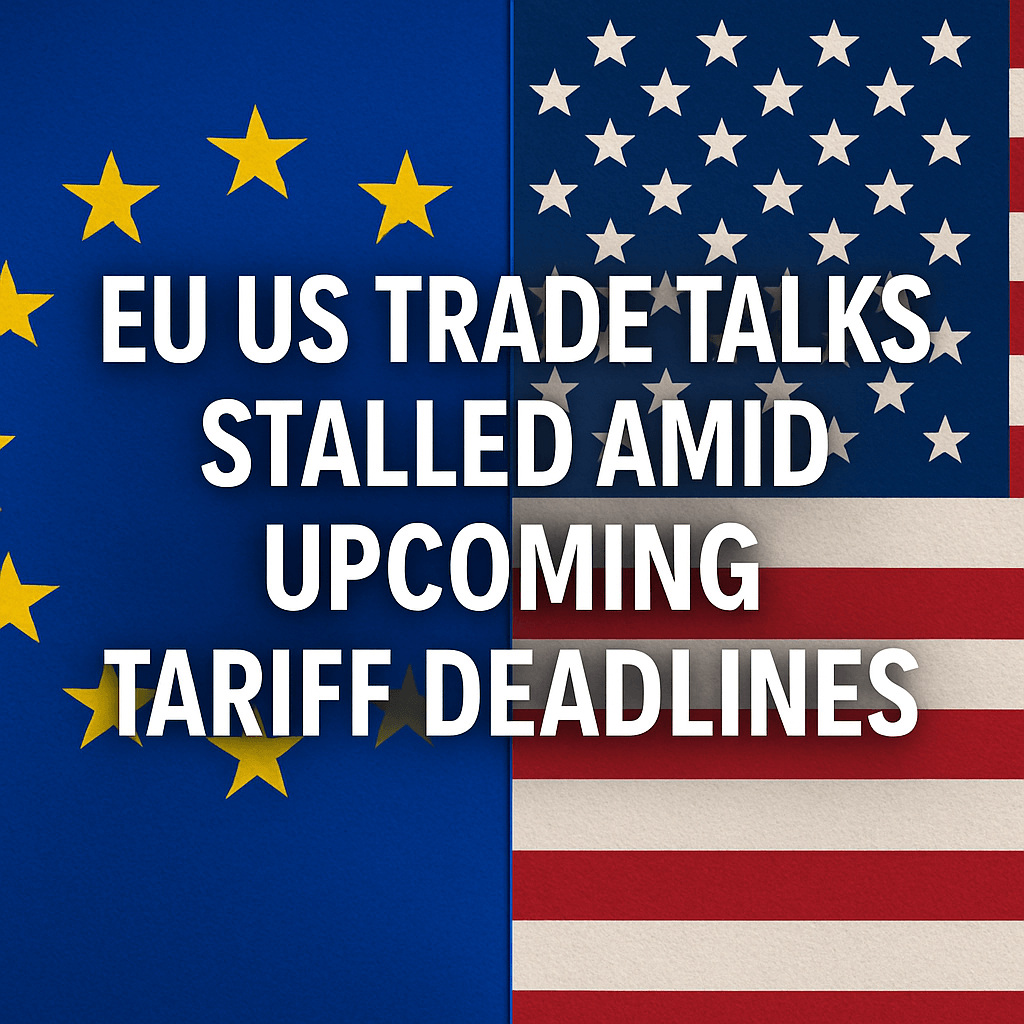EU-US Trade Talks Stalled Amid Upcoming Tariff Deadlines

Stalled Negotiations and Escalating Threats
Forty-five days after the U.S. administration announced a 90-day pause in its global trade war, negotiations between the European Union and the United States have made little apparent progress. In late March, both sides exchanged formal offers by letter—but by early April, President Trump warned via his social media platform Truth that he may impose “a straight 50% tariffs on European Union” imports starting June 1, 2025.
“The European Union, which was formed for the primary purpose of taking advantage of the United States on TRADE, has been very difficult to deal with,” President Trump wrote. “Their powerful Trade Barriers, VAT Taxes, ridiculous Corporate Penalties, Non-Monetary Trade Barriers, Monetary Manipulations, unfair and unjustified lawsuits against American Companies, and more, have led to a Trade Deficit with the U.S. of more than $250,000,000 a year, a number which is totally unacceptable.”
The EU disputes these deficit calculations, noting that the United States runs a significant surplus in services trade and estimating the overall goods and services balance at a modest €50 billion in the EU’s favor.
Current Tariff Landscape
- U.S. levies 25% on EU steel, aluminium and automobiles
- Blanket 10% duty on all other EU-origin goods
- EU’s proposed counter-tariffs suspended: €21 billion worth of U.S. exports
Latest Offers From Both Sides
The European Commission, which negotiates on behalf of all 27 member states, has outlined a comprehensive zero-to-zero tariff exchange on industrial goods. Brussels also proposes:
- Guaranteed annual purchases of U.S. liquefied natural gas (LNG) volumes, backed by long-term offtake agreements.
- Unrestricted access to U.S. artificial intelligence (AI) hardware and software patents, with a roadmap for joint R&D in non-sensitive applications.
- Duty-free trade in select agricultural products—specifically U.S. soybeans and non-sanitary-sensitive produce.
- Cooperation on China policy, targeting overcapacity in key sectors and harmonizing anti-dumping methodologies.
According to diplomatic sources, the U.S. rejoinder failed to match these concessions, leaving a wide gap on both tariff cuts and non-tariff barrier reductions.
Technical Analysis of Tariff Impacts
Imposing a 50% tariff across broad categories would disrupt supply chains governed by the Harmonized System (HS) at 6-digit code granularity. For example:
- HS 8703 (automobiles): a 25% duty hike would raise vehicle costs by an estimated $3,200 per unit, assuming full pass-through.
- HS 2711 (petroleum gases including LNG): duty escalation alters price spreads by up to $1.50/MMBtu, affecting EU energy budgets.
Economic models—particularly computable general equilibrium (CGE) simulations—suggest that a 50% across-the-board hike could shave 0.4% off EU GDP over two years, while U.S. producers might see export volumes fall by 20% in key sectors.
Expert Opinions on LNG, AI Technology and Agriculture
Dr. Elena Fischer, senior energy analyst at the European Energy Institute, notes: “Binding LNG purchase commitments could stabilize European gas markets, but infrastructure constraints—liquefaction capacity in the U.S. and regas terminals in the EU—must be addressed within 12–18 months.”
Prof. Marcus Reid, AI policy specialist at the Atlantic Digital Forum, adds: “Harmonizing export control lists for dual-use AI algorithms could unlock joint ventures but will require an interagency U.S. review to classify ‘non-sensitive’ technologies.”
Legal Context and WTO Considerations
Under World Trade Organization rules, unilateral tariff hikes risk challenge in the Dispute Settlement Body. The EU’s proposed countermeasures—up to €95 billion—are calibrated to meet WTO proportionality tests. Key legal points include:
- Retaliation must be commensurate: tariffs on U.S. goods cannot exceed the value of nullified benefits.
- “Safeguard” clauses allow temporary tariffs to address import surges, but require rigorous injury demonstration.
- Section 301 (U.S.) remedies differ: the U.S. can impose measures if it deems foreign practices unfair, irrespective of WTO findings.
Future Outlook and Contingency Measures
European Commission Vice-President Maroš Šefčovič has already made three trips to Washington, meeting with U.S. trade representative Jamie McGrath and private-sector counterparts. A high-level meeting planned for June—coinciding with an OECD summit in Paris—could prove decisive.
If negotiations collapse, the Commission’s standby package includes:
- Reinstating a €21 billion tariff list on U.S. industrial and agricultural goods.
- Escalating to a €95 billion package covering chemicals, medical devices, aircraft components and semiconductors.
- Trigger mechanisms allowing member states to impose additional national duties within weeks.
Both sides maintain that “technical discussions” continue, but without substantial convergence, policy observers warn that the post-truce return to pre-trade-war tariff levels is unlikely.